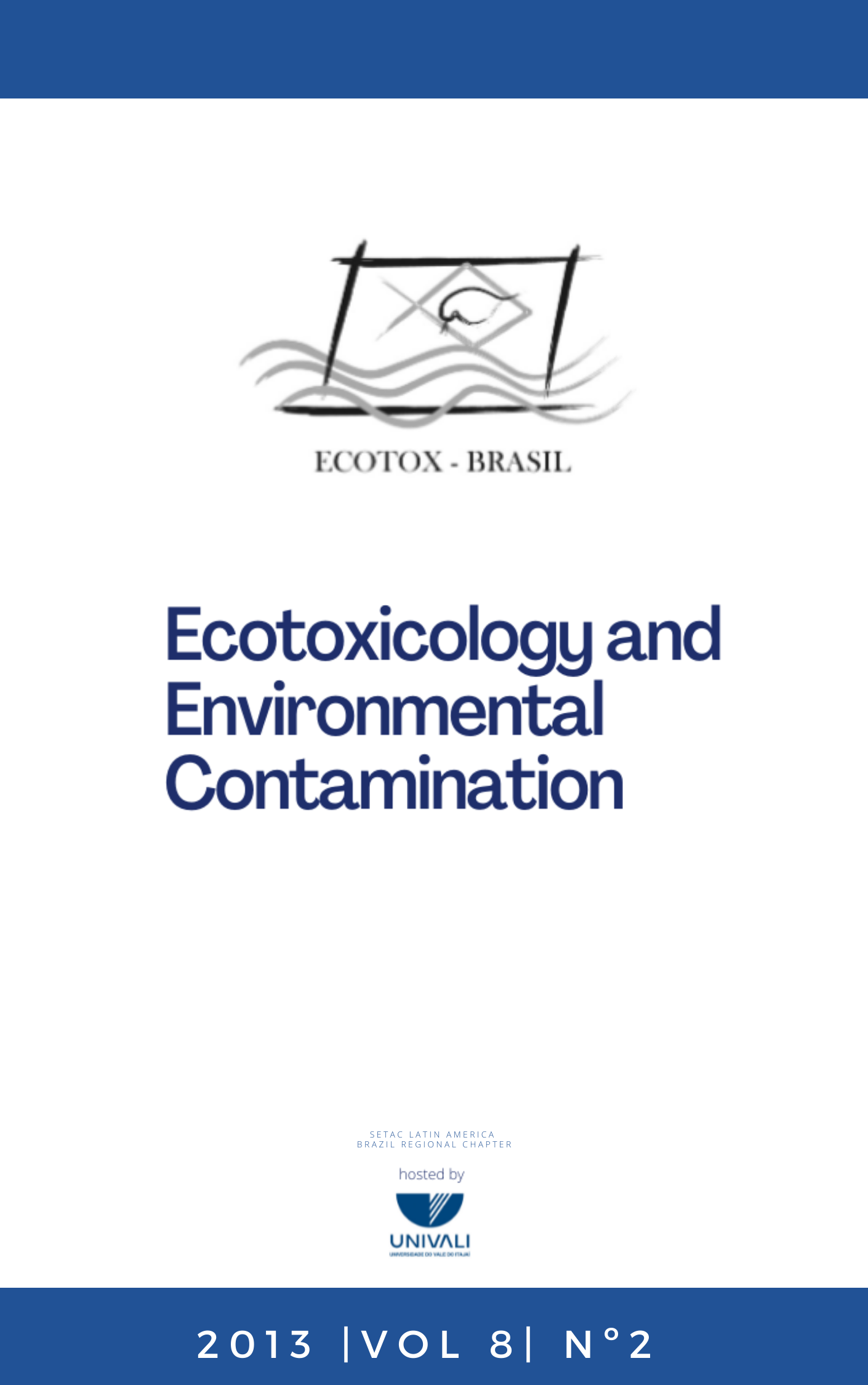Effect of sodium arsenite on liver function related enzymes of cat fish Heteropneustes fossilis and its chelation by zeolite
DOI:
https://doi.org/10.5132/eec.2013.02.008Resumen
Arsenic has been associated with a multitude of health problems and various works to study its impact on different organisms are being done in different parts of the world. Remediation of metal toxicity in environment and animal body including man is a controversial topic. Fishes accumulate the toxicant easily through food chain and water and transfer it to humans. In the present study the impact of arsenic on enzymes of the fish Heteropneustes fossilis and the ability of synthetic zeolite as chelating agent were carried out. The alteration in activities of GPT, GOT and Alkaline phosphatase in the liver of Heteropneustes fossilis and the chelating effect of synthetic zeolite on it was studied after exposure to different concentrations of sodium arsenite for different durations. Fishes are exposed to two different concentrations of sodium arsenite (200 mL and 400 mL of 1% solution), for 3 different durations (3days, 7days and 15 days).The activities of GPT (F=46.63>14.24) and ALP (F=595.33>190.97) was found significantly elevated along with increasing concentration of sodium arsenite. The reversal of the effect on treatment with 1% solution of zeolite, along with sodium arsenite (GPT, F=47.78 > 14.24; and ALP, F=562.33 > 190.97, at 5% P) was reported. Where as the activity for GOT showed significant decrease (F= 132.12 > 49.69, at 5% P) on exposure to sodium arsenite and in this case also reversal of the effect on chelation with zeolite (F=107.21>49.69, at 5% P), was noticed.
Descargas
Descargas
Publicado
Cómo citar
Número
Sección
Licencia
Copyright © 2006 ECOTOX-Brasil
Copyright notice: It is a condition for publication that manuscripts submitted to this journal have not yet been published and will not be simultaneously submitted or published elsewhere. By submitting a manuscript, the authors agree that copyright for their article is transferred to the Sociedade Brasileira de Ecotoxicologia (ECOTOX-Brasil) if and when the article is accepted for publication. The copyright covers the exclusive rights to reproduce and distribute articles, including reprints, photographic reproductions or any other reproduction of a similar nature, including translations. No part of this publication may be reproduced, stored in a retrieval system or transmitted in any form or by any means, electronic, mechanical, photocopying, recording or otherwise, without permission of the publisher.
Notice: While every effort is made by the EEC, editors and editorial board to see that no inaccurate or misleading data, opinions or statements appear in this journal, they wish to make it clear that the contents of the articles and advertisements published herein are the sole responsibility of the contributors or advertisers concerned. Accordingly, the EEC, the editorial board and editors and their respective employees, officers and agents accept no responsibility or liability whatsoever for the consequences of any inaccurate or misleading data, opinion or statement.




